Mammography in combination with breast ultrasonography versus mammography for breast cancer screening in women at average risk
- PMID: 36999589
- PMCID: PMC10065327
- DOI: 10.1002/14651858.CD009632.pub3
Mammography in combination with breast ultrasonography versus mammography for breast cancer screening in women at average risk
Abstract
Background: Screening mammography can detect breast cancer at an early stage. Supporters of adding ultrasonography to the screening regimen consider it a safe and inexpensive approach to reduce false-negative rates during screening. However, those opposed to it argue that performing supplemental ultrasonography will also increase the rate of false-positive findings and can lead to unnecessary biopsies and treatments.
Objectives: To assess the comparative effectiveness and safety of mammography in combination with breast ultrasonography versus mammography alone for breast cancer screening for women at average risk of breast cancer.
Search methods: We searched the Cochrane Breast Cancer Group's Specialised Register, CENTRAL, MEDLINE, Embase, the World Health Organization International Clinical Trials Registry Platform (WHO ICTRP), and ClinicalTrials.gov up until 3 May 2021.
Selection criteria: For efficacy and harms, we considered randomised controlled trials (RCTs) and controlled non-randomised studies enrolling at least 500 women at average risk for breast cancer between the ages of 40 and 75. We also included studies where 80% of the population met our age and breast cancer risk inclusion criteria.
Data collection and analysis: Two review authors screened abstracts and full texts, assessed risk of bias, and applied the GRADE approach. We calculated the risk ratio (RR) with 95% confidence intervals (CI) based on available event rates. We conducted a random-effects meta-analysis.
Main results: We included eight studies: one RCT, two prospective cohort studies, and five retrospective cohort studies, enrolling 209,207 women with a follow-up duration from one to three years. The proportion of women with dense breasts ranged from 48% to 100%. Five studies used digital mammography; one study used breast tomosynthesis; and two studies used automated breast ultrasonography (ABUS) in addition to mammography screening. One study used digital mammography alone or in combination with breast tomosynthesis and ABUS or handheld ultrasonography. Six of the eight studies evaluated the rate of cancer cases detected after one screening round, whilst two studies screened women once, twice, or more. None of the studies assessed whether mammography screening in combination with ultrasonography led to lower mortality from breast cancer or all-cause mortality. High certainty evidence from one trial showed that screening with a combination of mammography and ultrasonography detects more breast cancer than mammography alone. The J-START (Japan Strategic Anti-cancer Randomised Trial), enrolling 72,717 asymptomatic women, had a low risk of bias and found that two additional breast cancers per 1000 women were detected over two years with one additional ultrasonography than with mammography alone (5 versus 3 per 1000; RR 1.54, 95% CI 1.22 to 1.94). Low certainty evidence showed that the percentage of invasive tumours was similar, with no statistically significant difference between the two groups (69.6% (128 of 184) versus 73.5% (86 of 117); RR 0.95, 95% CI 0.82 to 1.09). However, positive lymph node status was detected less frequently in women with invasive cancer who underwent mammography screening in combination with ultrasonography than in women who underwent mammography alone (18% (23 of 128) versus 34% (29 of 86); RR 0.53, 95% CI 0.33 to 0.86; moderate certainty evidence). Further, interval carcinomas occurred less frequently in the group screened by mammography and ultrasonography compared with mammography alone (5 versus 10 in 10,000 women; RR 0.50, 95% CI 0.29 to 0.89; 72,717 participants; high certainty evidence). False-negative results were less common when ultrasonography was used in addition to mammography than with mammography alone: 9% (18 of 202) versus 23% (35 of 152; RR 0.39, 95% CI 0.23 to 0.66; moderate certainty evidence). However, the number of false-positive results and necessary biopsies were higher in the group with additional ultrasonography screening. Amongst 1000 women who do not have cancer, 37 more received a false-positive result when they participated in screening with a combination of mammography and ultrasonography than with mammography alone (RR 1.43, 95% CI 1.37 to 1.50; high certainty evidence). Compared to mammography alone, for every 1000 women participating in screening with a combination of mammography and ultrasonography, 27 more women will have a biopsy (RR 2.49, 95% CI 2.28 to 2.72; high certainty evidence). Results from cohort studies with methodological limitations confirmed these findings. A secondary analysis of the J-START provided results from 19,213 women with dense and non-dense breasts. In women with dense breasts, the combination of mammography and ultrasonography detected three more cancer cases (0 fewer to 7 more) per 1000 women screened than mammography alone (RR 1.65, 95% CI 1.0 to 2.72; 11,390 participants; high certainty evidence). A meta-analysis of three cohort studies with data from 50,327 women with dense breasts supported this finding, showing that mammography and ultrasonography combined led to statistically significantly more diagnosed cancer cases compared to mammography alone (RR 1.78, 95% CI 1.23 to 2.56; 50,327 participants; moderate certainty evidence). For women with non-dense breasts, the secondary analysis of the J-START study demonstrated that more cancer cases were detected when adding ultrasound to mammography screening compared to mammography alone (RR 1.93, 95% CI 1.01 to 3.68; 7823 participants; moderate certainty evidence), whilst two cohort studies with data from 40,636 women found no statistically significant difference between the two screening methods (RR 1.13, 95% CI 0.85 to 1.49; low certainty evidence).
Authors' conclusions: Based on one study in women at average risk of breast cancer, ultrasonography in addition to mammography leads to more screening-detected breast cancer cases. For women with dense breasts, cohort studies more in line with real-life clinical practice confirmed this finding, whilst cohort studies for women with non-dense breasts showed no statistically significant difference between the two screening interventions. However, the number of false-positive results and biopsy rates were higher in women receiving additional ultrasonography for breast cancer screening. None of the included studies analysed whether the higher number of screen-detected cancers in the intervention group resulted in a lower mortality rate compared to mammography alone. Randomised controlled trials or prospective cohort studies with a longer observation period are needed to assess the effects of the two screening interventions on morbidity and mortality.
Copyright © 2023 The Cochrane Collaboration. Published by John Wiley & Sons, Ltd.
Conflict of interest statement
AG: none known. Works as a general practitioner GW: none known JM: none known. Works as a surgeon BT: none known IK: none known NB: none known. Works as a general practitioner LG: none known DB: none known. Works as a radiologist TH: received a grant, payments for lectures and presentations, and support for attending meetings from Siemens. Works as a radiologist GG: none known
Figures

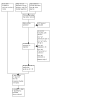

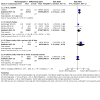
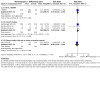
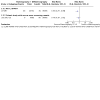



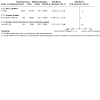
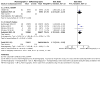
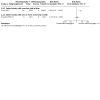
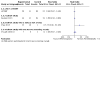
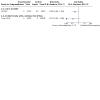

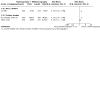
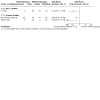
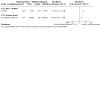
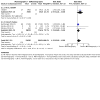

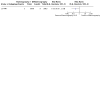

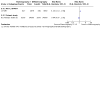
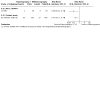
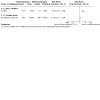
Update of
-
Mammography in combination with breast ultrasonography versus mammography for breast cancer screening in women at average risk.Cochrane Database Syst Rev. 2013 Apr 30;2013(4):CD009632. doi: 10.1002/14651858.CD009632.pub2. Cochrane Database Syst Rev. 2013. Update in: Cochrane Database Syst Rev. 2023 Mar 31;3:CD009632. doi: 10.1002/14651858.CD009632.pub3. PMID: 23633376 Free PMC article. Updated.
References
References to studies included in this review
Buchberger 2018 {published data only}
-
- Buchberger W, Geiger-Gritsch S, Knapp R, Gautsch K, Oberaigner W. Combined screening with mammography and ultrasound in a population-based screening program. European Journal of Radiology 2018;101:24-9. - PubMed
Chae 2013 {published data only}
-
- Chae EY, Kim HH, Cha JH, Shin HJ, Kim H. Evaluation of screening whole-breast sonography as a supplemental tool in conjunction with mammography in women with dense breasts. Journal of Ultrasound in Medicine 2013;32(9):1573-8. - PubMed
Chough 2020 {published data only}
-
- Chough DM, Berg WA, Bandos AI, Rathfon GY, Hakim CM, Lu AH, et al. A prospective study of automated breast ultrasound screening of women with dense breasts in a digital breast tomosynthesis-based practice. Journal of Breast Imaging 2020;2(2):125-33. - PubMed
Giuliano 2013 {published data only}
-
- Giuliano V, Giuliano C. Improved breast cancer detection in asymptomatic women using 3D-automated breastultrasound in mammographically dense breasts. Clinical Imaging 2013;37(3):480-6. - PubMed
J‐START {published data only}
-
- Harada-Shoji N, Suzuki A, Ishida T, Zheng Y-F, Narikawa-Shiono Y, Sato-tadano A, et al. Evaluation of adjunctive ultrasonography for breast cancer detection among women aged 40-49 years with varying breast density undergoing screening mammography: a secondary analysis of a randomized clinical trial. JAMA Network Open 2021;4(8):e2121505. - PMC - PubMed
-
- Ohuchi N, Suzuki A, Sobue T, Kawai M, Yamamoto S, Zheng YF, et al, J-START investigator groups. Sensitivity and specificity of mammography and adjunctive ultrasonography to screen for breast cancer in the Japan Strategic Anti-cancer Randomized Trial (J-START): a randomised controlled trial. Lancet 2016;387(10016):341-8. - PubMed
Lee 2019 {published data only}
Starikov 2016 {published data only}
-
- Starikov A, Drotman M, Hentel K, Katzen J, Min RJ, Arleo EK. 2D mammography, digital breast tomosynthesis, and ultrasound: which should be used for the different breast densities in breast cancer screening? Clinical Imaging 2016;40(1):68-71. - PubMed
Tohno 2013 {published data only}
-
- Tohno E, Umemoto T, Sasaki K, Morishima I, Ueno E. Effect of adding screening ultrasonography to screening mammography on patient recall and cancer detection rates: a retrospective study in Japan. European Journal of Radiology 2013;82(8):1227-30. - PubMed
References to studies excluded from this review
Boonlikit 2013 {published data only}
-
- Boonlikit S. Comparison of mammography in combination with breast ultrasonography versus mammography alone for breast cancer screening in asymptomatic women. Asian Pacific Journal of Cancer Prevention 2013;14(12):7731-6. - PubMed
Brem 2015 {published data only}
-
- Brem RF, Tabár L, Duffy SW, Inciardi MF, Guingrich JA, Hashimoto BE, et al. Assessing improvement in detection of breast cancer with three-dimensional automated breast US in women with dense breast tissue: the SomoInsight Study. Radiology 2015;274(3):663-73. - PubMed
Chou 2017 {published data only}
-
- Chou HH, Chen SC. Clinical analysis of the outcome of breast ultrasound after screening mammography as breast imaging reporting and data system (BI-RADS) category. Ultrasound in Medicine and Biology 2017;43:S22.
Dong 2018 {published data only}
-
- Dong H, Huang Y, Song F, Dai H, Liu P, Zhu Y, et al. Improved performance of adjunctive ultrasonography after mammography screening for breast cancer among Chinese females. Clinical Breast Cancer 2018;18(3):e353-61. - PubMed
Dromain 2012 {published data only}
Franchini 2021 {published data only}
-
- Franchini M, Pieroni S, Montrucchio E, Nori Cucchiari J, Di Maggio C, Cassano E, D et al, On Behalf Of The Pink Consortium. The P.I.N.K. study approach for supporting personalized risk assessment and early diagnosis of breast cancer. International Journal of Environmental Research and Public Health 2021;18(5):2456. - PMC - PubMed
Huang 2009 {published data only}
-
- Huang C, Fann C, Hsu G, Ho M, Chang K, Chen S, et al. A population-based cross-over randomized controlled trial of breast cancer screening with alternate mammography and ultrasound for women aged 40 to 49 years in Taiwan. Cancer Research 2009;69(24 Suppl):73.
Hwang 2015 {published data only}
Ishida 2014 {published data only}
-
- Ishida T, Suzuki A, Kawai M, Narikawa Y, Saito H, Yamamoto S, et al. A randomized controlled trial to verify the efficacy of the use of ultrasonography in breast cancer screening aged 40-49 (J-START): 76 196 women registered. Japanese Journal of Clinical Oncology 2014;44(2):134-40. - PubMed
Lee 2017 {published data only}
Leong 2012 {published data only}
-
- Leong LC, Gogna A, Pant R, Ng FC, Sim LS. Supplementary breast ultrasound screening in Asian women with negative but dense mammograms-a pilot study. Annals of the Academy of Medicine, Singapore 2012;41(10):432-9. - PubMed
Melnikow 2016 {published data only}
-
- Melnikow J, Fenton JJ, Whitlock EP, Miglioretti DL, Weyrich MS, Thompson JH, et al. Supplemental screening for breast cancer in women with dense breasts: a systematic review for the U.S. Preventive Service Task Force. Agency for Healthcare Research and Quality 2016;126:14-05201-EF-3. - PubMed
Moon 2015 {published data only}
-
- Moon HJ, Jung I, Park SJ, Kim MJ, Youk JH, Kim EK. Comparison of cancer yields and diagnostic performance of screening mammography vs. supplemental screening ultrasound in 4394 women with average risk for breast cancer. Ultraschall in der Medizin/European Journal of Ultrasound 2015;36(3):255-63. - PubMed
Nelson 2016 {published data only}
-
- Nelson HD, Pappas M, Cantor A, Griffin J, Daeges M, Humphrey L. Harms of breast cancer screening: systematic review to update the 2009 U.S. Preventive Services Task Force Recommendation. Annals of Internal Medicine 2016;164(4):256-67. - PubMed
Sakurai 2014 {published data only}
-
- Sakurai K, Fujisaki S, Nagashima S, Maeda T, Tomita R, Suzuki S, et al. [Success rate of breast conserving surgery for different breast cancer screening methods]. Gan To Kagaku Ryoho 2014;41(12):1890-1. - PubMed
Shen 2015 {published data only}
Skaane 2015 {published data only}
-
- Skaane P, Gullien R, Eben EB, Sandhaug M, Schulz-Wendtland R, Stoeblen F. Interpretation of automated breast ultrasound (ABUS) with and without knowledge of mammography: A reader performance study. Acta Radiologica 2015;56(4):404-12. - PubMed
Spraque 2015 {published data only}
Tagliafico 2016 {published data only}
-
- Tagliafico A, Calabrese M, Mariscotti G, Durando M, Tosto S, Monetti F, et al. Interim results of the adjunct screening with tomosynthesis or ultrasound in mammography-negative dense breasts (ASTOUND) trial. In: European Journal of Cancer. Vol. 57. 2016:S3-4.
Weigel 2013 {published data only}
-
- Weigel S, Biesheuvel C, Berkemeyer S, Kugel H, Heindel W. Digital mammography screening: how many breast cancers are additionally detected by bilateral ultrasound examination during assessment? European Radiology 2013;23(3):684-91. - PubMed
Weigert 2015 {published data only}
-
- Weigert J, Steenbergen S. The connecticut experiments second year: ultrasound in the screening of women with dense breasts. The Breast Journal 2015;21(2):175-80. - PubMed
Weigert 2017 {published data only}
-
- Weigert JM. The Connecticut Experiment; The Third Installment: 4 years of screening women with dense breasts with bilateral ultrasound. The Breast Journal 2017;23(1):34-9. - PubMed
Wilczek 2016 {published data only}
-
- Wilczek B, Wilczek H E, Rasouliyan L, Leifland K. Adding 3D automated breast ultrasound to mammography screening in women with heterogeneously and extremely dense breasts: Report from a hospital-based, high-volume, single-center breast cancer screening program. European Journal of Radiology 2016;85(9):1554-63. - PubMed
Yaffe 2016 {published data only}
-
- Yaffe MJ, Jong RA. Adjunctive ultrasonography in breast cancer screening. Lancet 2016;387(10016):313-4. - PubMed
References to ongoing studies
DRKS00019097 {published data only}
-
- DRKS00019097. Density-indicated mammographic-sonographic breast cancer screening. https://drks.de/search/en/trial/DRKS00019097 (first received 13 November 2019).
NCT04097366 {published data only}
-
- NCT04097366. Breast screening - risk adaptive imaging for density breast screening (BRAID). clinicaltrials.gov/show/NCT04097366 (first received 20 September 2019).
NCT04429269 {published data only}
-
- NCT04429269. A comparative study of mammography and ultrasound for breast cancer screening and early diagnosis. clinicaltrials.gov/ct2/show/NCT04429269 (first received 12 June 2020).
Additional references
Albert 2009
Balshem 2011
-
- Balshem H, Helfand M, Schünemann HJ, Oxman AD, Kunz R, Brozek J, et al. GRADE guidelines: 3. Rating the quality of evidence. Journal of Clinical Epidemiology 2011;64(4):401-6. - PubMed
Berg 2008
Berg 2012
Bleyer 2012
-
- Bleyer A, Welch HG. Effect of three decades of screening mammography on breast-cancer incidence. The New England Journal of Medicine 2012;367(21):1998-2005. - PubMed
Brem 2015
-
- Brem RF, Tabár L, Duffy SW, Inciardi MF, Guingrich JA, Hashimoto BE, et al. Assessing improvement in detection of breast cancer with three-dimensional automated breast US in women with dense breast tissue: the SomoInsight Study. Radiology 2015;274(3):663-73. - PubMed
Carney 2003
-
- Carney PA, Miglioretti DL, Yankaskas BC, Kerlikowske K, Rosenberg R, Rutter CM. Individual and combined effects of age, breast density, and hormone replacement therapy use on the accuracy of screening mammography. Annals of Internal Medicine 2003;138(3):168-75. - PubMed
CTFPHC 2018
Daly 2021
-
- Daly MB, Pal T, Berry MP, Buys SS, Dickson P, Domchek SM, et al. Genetic/familial high-risk assessment: breast, ovarian, and pancreatic, Version 2.2021, NCCN Clinical Practice Guidelines in Oncology. Journal of the National Comprehensive Cancer Network 2021;19(1):77-102. - PubMed
Duffy 2020
Elshof 2015
-
- Elshof LE, Tryfonidis K, Slaets L, Leeuwen-Stok AE, Skinner VP, Dif N, et al. Feasibility of a prospective, randomised, open-label, international multicentre, phase III, non-inferiority trial to assess the safety of active surveillance for low risk ductal carcinoma in situ - The LORD study. European Journal of Cancer 2015;51(12):1497-510. - PubMed
EndNote 20 [Computer program]
-
- EndNote. Version 20.1. Clarivate, 30 October 2020. https://endnote.com.
Esserman 2014
European Comission 2021
-
- Women with high breast density. https://healthcare-quality.jrc.ec.europa.eu/european-breast-cancer-guide... 3 August 2021.
European Commission 2022
-
- Organising breast cancer screening programmes. https://healthcare-quality.jrc.ec.europa.eu/european-breast-cancer-guide... 8 November 2022.
Francis 2015
-
- Francis A, Thomas J, Fallowfield L, Wallis M, Bartlett JM, Brookes C, et al. Addressing overtreatment of screen detected DCIS; the LORIS trial. European Journal of Cancer 2015;51(16):2296-303. - PubMed
GRADEpro GDT [Computer program]
-
- GRADEpro GDT. Version accessed 30 November 2022. Hamilton (ON): McMaster University (developed by Evidence Prime). Available at gradepro.org.
Gøtzsche 2013
Heller 2015
Higgins 2019
-
- Higgins JPT, Thomas J. Cochrane Handbook for Systematic Reviews of Interventions Version 6.0 (updated July 2019) The Cochrane Collaboration, 2019. Available from training.cochrane.org/handbook/archive/v6.
HIRU
-
- Health Information Research Unit. Search Filters for MEDLINE in Ovid Syntax and the PubMed translation. https://hiru.mcmaster.ca/hiru/HIRU_Hedges_MEDLINE_Strategies.aspx accessed 01 May 2021.
Hwang 2019
Kerlikowske 2015
Lynge 2019
Melnikow 2016
-
- Melnikow J, Fenton JJ, Whitlock EP. Supplemental screening for breast cancer in women with dense breasts: a systematic review for the U.S. Preventive Service Task Force. Agency for Healthcare Research and Quality (US). Vol. Evidence Syntheses, No. 126. Available from: https://www.ncbi.nlm.nih.gov/books/NBK343793/: U.S. Preventive Services Task Force, 2016. - PubMed
Moshina 2018
-
- Moshina N, Sebuødegård D, Lee CI, Akslen LA, Tsuruda KM, Elmore JG, et al. Automated volumetric analysis of mammographic density in a screening setting: worse outcomes for women with dense breasts. Radiology 2018;288(2):343-52. - PubMed
Nelson 2009
Nelson 2016a
-
- Nelson HD, Fu R, Cantor A, Pappas M, Daeges M, Humphrey L. Effectiveness of Breast Cancer Screening: Systematic Review and Meta-analysis to Update the 2009 U.S. Preventive Services Task Force Recommendation. Annals of Internal Medicine 2016;164(4):244-55. - PubMed
Nelson 2016b
-
- Nelson HD, Pappas M, Cantor A, Griffin J, Daeges M, Humphrey L, US Preventive Services Task Force. Harms of Breast Cancer Screening: Systematic Review to Update the 2009 U.S. Preventive Services Task Force Recommendation. Annals of Internal Medicine 2016;164(4):256-67. - PubMed
RevMan Web 2022 [Computer program]
-
- Review Manager Web (RevMan Web). Version 4.12.0. The Cochrane Collaboration, 2022. Available at revman.cochrane.org.
SEER Cancer Statistics
-
- National Cancer Institute. SEER Cancer Statistics Review (CSR) 1975-2016. https://seer.cancer.gov/statfacts/html/breast.html accessed 2021.
Siu 2016
-
- Siu AL. Screening for Breast Cancer: U.S. Preventive Services Task Force Recommendation Statement. Annals of Internal Medicine 2016;164(4):279-96. - PubMed
Sopik 2018
Sterne 2016
Sterne 2019
-
- Sterne JAC, Savović J, Page MJ, Elbers RG, Blencowe NS, Boutron I, et al. RoB 2: a revised tool for assessing risk of bias in randomised trials. BMJ 2019;366:I4898. - PubMed
Sung 2021
-
- Sung H, Ferlay J, Siegel RL, Laversanne M, Soerjomataram I, Jemal A, Bray F. Global Cancer Statistics 2020: GLOBOCAN Estimates of Incidence and Mortality Worldwide for 36 Cancers in 185 Countries. CA Cancer J Clin 2021;71(3):209-249. - PubMed
US FDA
-
- Compliance guidance: the Mammography Quality Standards Act Final Regulations: preparing for MQSA inspections; final. https://www.fda.gov/regulatory-information/search-fda-guidance-documents... 20 August 2018.
van Seijen 2019
Waffenschmidt 2020
-
- Waffenschmidt S, Navarro‐Ruan T, Hobson N, Hausner E, Sauerland S, Haynes RB. Development and validation of study filters for identifying controlled non‐randomized studies in PubMed and Ovid MEDLINE. Research Synthesis Methods 2020;11(5):617-26. - PubMed
Welch 2016
-
- Welch G, Prorok P, O'Malley J, Kramer B. Breast-cancer tumor size, overdiagnosis and mammography screening effectiveness. The New England Journal of Medicine 2016;375:1438-47. - PubMed
Publication types
MeSH terms
LinkOut - more resources
Full Text Sources
Medical
Miscellaneous

